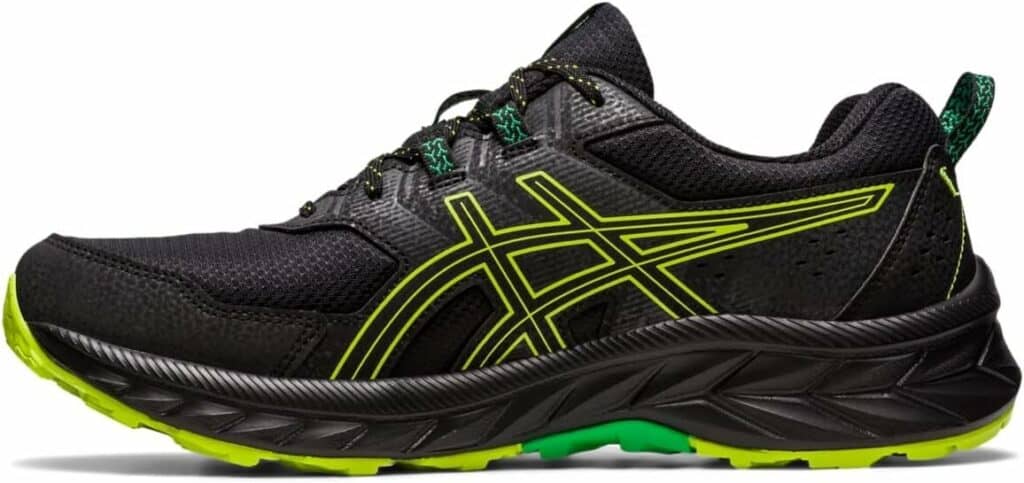Welcome to our blog, where we are dedicated to helping you find the perfect pair of running shoes for your high arches. As runners, we understand the importance of having the right footwear to support your feet, reduce discomfort, and prevent potential injuries. That’s why we have put together a list of the best running shoes for high arches in 2024. We have done extensive research to ensure that you have access to the latest and most innovative options on the market. Whether you’re a casual jogger or a competitive athlete, finding the ideal running shoes for your high arches is crucial for your overall performance. So, let’s dive in and discover the top picks that will provide you with the comfort and support you need to conquer those miles ahead.
What causes high arches?
High arches, also known as cavus foot, is a condition in which the arch of the foot is significantly raised. While many people have naturally high arches without any issues, others may experience symptoms and complications due to this foot structure. So, what causes high arches in the first place?
There are several factors that can contribute to the development of high arches. One common cause is genetics. If a family member has high arches, there is a higher likelihood of inheriting the condition. Additionally, certain medical conditions like cerebral palsy, muscular dystrophy, and Charcot-Marie-Tooth disease can also lead to high arches.
Another factor that can contribute to the development of high arches is muscle imbalances and tightness. When the muscles and tendons in the feet and lower legs are imbalanced, it can affect the arches. For example, if the calf muscles are overly tight, they can pull on the foot and cause the arches to raise.
In some cases, high arches can be a symptom of an underlying neurological disorder. Conditions like spinal cord injury, stroke, or nerve damage can affect the nerves that control the muscles in the feet, leading to high arches. It is essential for individuals with high arches to seek medical evaluation and diagnosis to identify any underlying causes and develop an appropriate treatment plan.
Overall, while the exact cause of high arches may vary, it is crucial to remember that seeking medical advice is important in order to properly manage and treat any symptoms or complications that may arise. From genetic factors to muscle imbalances and underlying neurological disorders, understanding the causes of high arches can help individuals take appropriate steps towards maintaining their foot health.
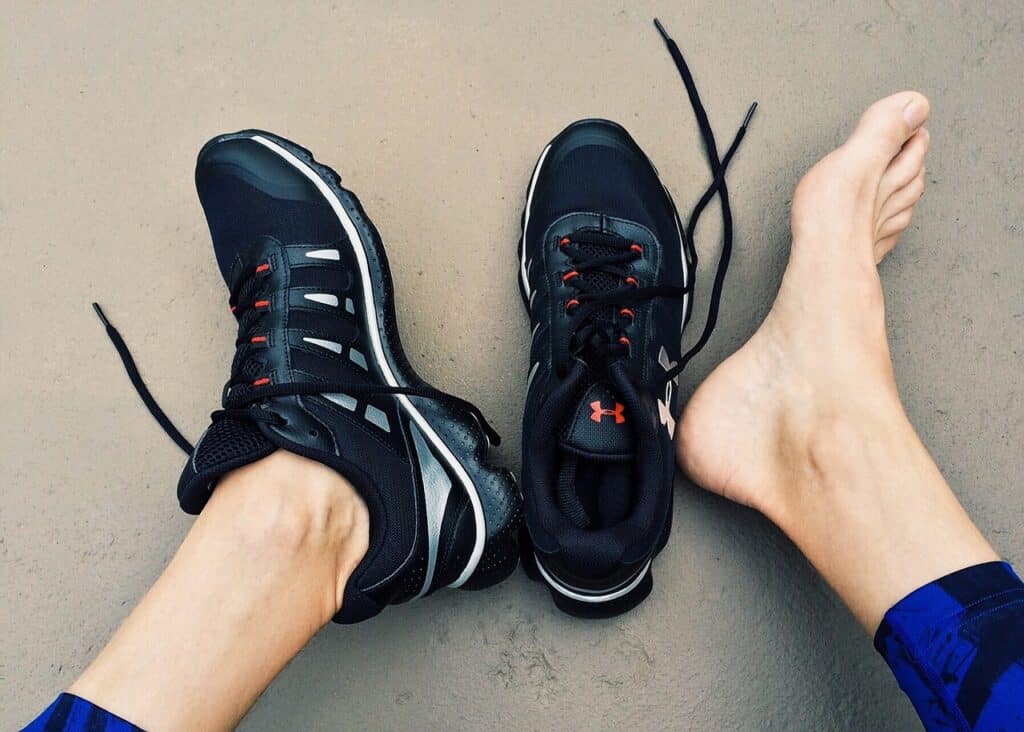
Who should get gait analysis?
Gait analysis is a specialized assessment that involves the study of human movement patterns, specifically the way a person walks or runs. It is commonly used in the field of sports medicine to help athletes improve their performance and prevent injuries. However, gait analysis can also be beneficial for individuals who are not athletes. So who should consider getting gait analysis?
One group of individuals who can greatly benefit from gait analysis are those suffering from chronic pain, particularly in the lower back, hips, knees, or ankles. By studying their movement patterns, gait analysis can identify any biomechanical imbalances or abnormal movement patterns that may be contributing to their pain. By addressing these issues through corrective exercises or orthotics, individuals can often find relief from their pain and improve their overall quality of life.
Another group that can benefit from gait analysis are individuals who have recently undergone an injury, surgery, or are recovering from a musculoskeletal condition. Gait analysis can help determine if there are any compensatory movement patterns or weaknesses that need to be addressed during the rehabilitation process. By identifying and correcting these issues, individuals can speed up their recovery and reduce the risk of re-injury.
Additionally, individuals who are looking to start a new exercise or training program can benefit from gait analysis. By analyzing their movement patterns, gait analysis can help identify any potential areas of weakness or imbalances that need to be addressed before starting the program. This can prevent injuries and improve overall performance by ensuring proper form and movement mechanics.
In conclusion, gait analysis is not just for athletes. It can be beneficial for anyone suffering from chronic pain, recovering from an injury or surgery, or looking to start a new exercise program. By identifying and addressing any movement imbalances or weaknesses, gait analysis can help improve performance, prevent injuries, and enhance overall quality of life.
How can you tell if you have high arches?
Do you ever wonder if you have high arches? Your arches play an essential role in supporting your body weight and providing stability while walking or running. High arches, also known as pes cavus, are characterized by a more pronounced arch than normal. If you’re curious to find out if you have high arches, there are some telltale signs to look out for.
One of the most obvious indicators of high arches is the visual appearance of your feet. Take a look at the bottom of your feet when standing. If you notice a significant gap between the ball of your foot and the heel, it’s likely that you have high arches. Your arch will appear higher and might not touch the ground when you stand or walk.
Another clue to determine if you have high arches is to examine the wear patterns on your shoes. Check the soles of your shoes for signs of excessive wear towards the outer edges. High arches tend to put more pressure on the outer part of the foot, causing uneven distribution of weight during walking or running. This uneven wear pattern can be an indication of high arches.
Additionally, people with high arches may experience certain symptoms. If you frequently suffer from foot pain, especially in the arch area or the balls of your feet, it could be a sign of high arches. You may also notice instability or difficulty balancing while walking or running. These symptoms occur due to the lack of proper support and shock absorption provided by the arches.
If you suspect you have high arches, it is essential to seek professional advice from a podiatrist or a foot specialist. They can accurately diagnose your arch type and provide recommendations for appropriate footwear or orthotics to address any potential issues. Remember, understanding the condition of your arches can help you take better care of your feet and maintain optimal foot health.
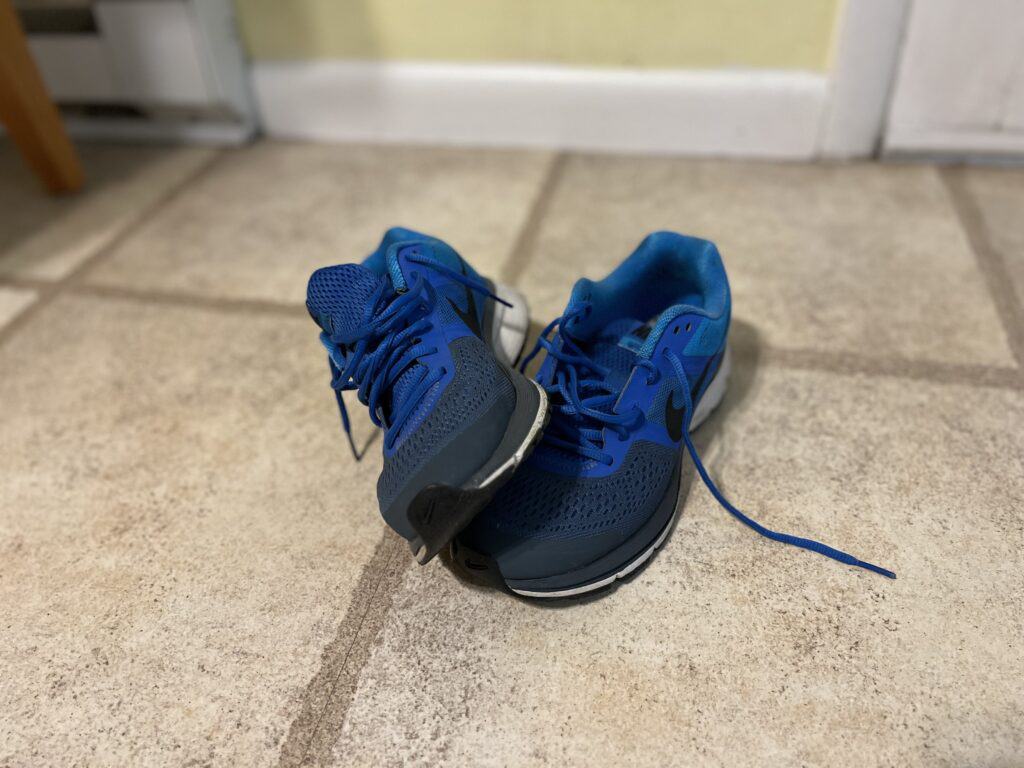
How often should you replace your running shoes?
When it comes to running shoes, there is a common question that arises: How often should you replace them? The lifespan of running shoes depends on various factors such as mileage, running surface, body weight, and running style. On average, it is recommended to replace your running shoes every 300-500 miles, or approximately every 4-6 months if you run regularly. However, it’s crucial to listen to your body and pay attention to the wear and tear of your shoes.
One indicator that it’s time to replace your running shoes is the noticeable wear on the outsole. If the treads are worn down and the rubber is starting to separate, it’s time to invest in a new pair. Another sign is discomfort during your runs. If you start experiencing pain or discomfort that you didn’t have before, it could be due to cushioning breakdown in your shoes.
It’s also important to consider your running goals and the type of runner you are. If you’re training for a marathon or participating in high-intensity workouts regularly, you might need to replace your shoes more frequently than someone who runs casually a few times a week. Additionally, if you notice any structural issues with your shoes, such as a loose midsole or torn upper, it’s best to replace them as these can affect your performance and increase the risk of injuries.
In conclusion, replacing your running shoes is essential for maintaining optimal performance and preventing injuries. While the general guideline is to replace them every 300-500 miles or every 4-6 months, it’s crucial to consider individual factors such as mileage, running surface, body weight, and running style. Remember to pay attention to the wear and tear of your shoes, any discomfort during your runs, and any structural issues. By staying attentive to these factors, you’ll ensure that your running shoes are always in top condition to support you on your running journey.
Are custom orthotics neccesary for high arches?
Are custom orthotics necessary for high arches? This is a common question among individuals who have high arches and experience discomfort or pain while walking or running. High arches, also known as pes cavus, can cause instability and a lack of cushioning in the feet.
While there is no one-size-fits-all answer to this question, custom orthotics can often provide significant relief for those with high arches. Custom orthotics are specially designed shoe inserts that are tailored to an individual’s specific foot shape and needs. They offer support, stability, and cushioning where it is needed the most.
Many people with high arches find that over-the-counter arch supports do not provide adequate relief. These generic inserts are not designed to address the unique biomechanical issues that come with high arches. Custom orthotics, on the other hand, can be crafted to distribute pressure more evenly across the foot, reducing discomfort and preventing future foot problems.
It is important to consult with a podiatrist or other foot health professional to determine whether custom orthotics are necessary for your high arches. They will be able to assess your foot structure, identify any potential issues, and recommend the most appropriate treatment options. While custom orthotics can be more expensive than over-the-counter options, they can be a worthwhile investment in your foot health and overall well-being.
Can high arches cause knee pain?
One common foot issue that many people face is having high arches. While high arches can provide an elegant and aesthetically pleasing look to the foot, they can also lead to various problems, including knee pain. The arch of the foot acts as a shock absorber, distributing the body’s weight evenly. However, in individuals with high arches, this distribution can become imbalanced, leading to excessive stress on the knees.
When the foot has a high arch, it tends to excessively tilt inward, a condition known as overpronation. This overpronation can result in the knee joint twisting and moving improperly, leading to pain and discomfort. Additionally, the elevated arch places increased pressure on the outside of the foot and the balls of the feet, further contributing to knee pain. Over time, this misalignment and excessive pressure can lead to chronic knee problems, such as tendonitis or arthritis.
To alleviate knee pain caused by high arches, it is essential to address the underlying foot issue. Orthotic inserts or custom-made arch supports can help provide necessary cushioning and support for the foot, thereby reducing the stress on the knees. Strengthening exercises for the feet and lower legs, such as calf raises and arch stretches, can also be beneficial in improving foot and leg alignment. Additionally, it is crucial to wear proper footwear that offers stability and arch support to prevent further knee pain.
In conclusion, high arches can indeed cause knee pain due to the imbalances and misalignment they create in the foot. The excessive inward rolling of the foot and the increased pressure on certain areas can lead to chronic knee problems over time. However, with the right approach, including the use of orthotic inserts and appropriate exercises, it is possible to manage and alleviate knee pain caused by high arches. Seeking professional advice from a podiatrist or orthopedic specialist is recommended to ensure a proper diagnosis and treatment plan for individuals experiencing knee pain related to high arches.
What are the best running shoe brands for high arches?
The best budget trail running shoes
ASICS Men’s Road Shoes
The ASICS Men’s Gel-Venture 9 Shoes are an excellent choice for road running enthusiasts. With its durable construction and comfortable fit, these shoes provide the necessary support and cushioning for long distance runs. The Gel cushioning system absorbs shock, reducing the impact on joints and minimizing the risk of injuries. The outsole offers excellent traction on various surfaces, ensuring a stable and confident grip during runs. Additionally, the breathable mesh upper keeps the feet cool and dry, even during intense workouts. Overall, the ASICS Men’s Gel-Venture 9 Shoes are a reliable and high-quality option for those seeking comfort and performance in their road running shoes.
Good running shoe for trail running
Good for road running
Rearfoot Gel cushioning provides comfortable ride
Gel cushioning in both the front and back of the shoe
Sturdy outsole with multidirectional lugs
Heavy compared to other trail shoes
Runs small
Weight: Not specified
Model: Gel Venture 9
Category: Road Running
Features: Stability and protection
Traction: Yes
Brand: ASICS
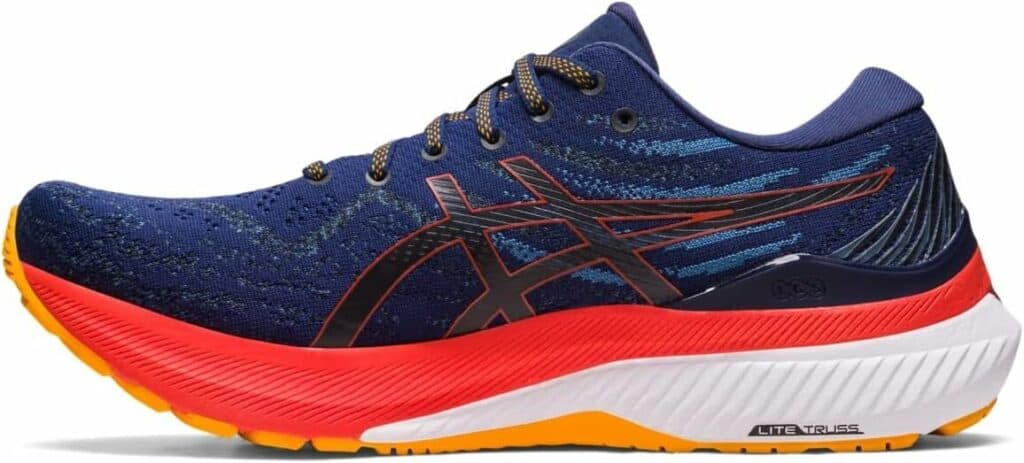
The best stability running shoes
ASICS Men’s Gel-Kayano 29 Running Shoes
The ASICS Men’s Gel-Kayano 29 Running shoes are a top-notch choice for road runners looking for comfort and stability. These shoes, available from the ASICS Store, boast the perfect combination of performance and style. With their gel cushioning technology, they provide ample support and shock absorption, ensuring a smooth and comfortable ride. The shoes also feature a durable rubber outsole, offering excellent traction even on wet surfaces. Whether you’re a seasoned marathoner or just starting your running journey, the ASICS Gel-Kayano 29 is a reliable and high-quality option that won’t disappoint.
Plush, comfortable cushioning
It’s a Kayano, so it’s got great cushioning and durability
Gel cushioning in both forefoot and heel
Lots of cushioning
Flytefoam Blast midsole is soft and bouncy
Heavy at 11.1 ounces
Bulky and heavy
Ankle strap: No
Sole: Gel
Gender: Men
Type of running: Road
Model: Gel-Kayano 29
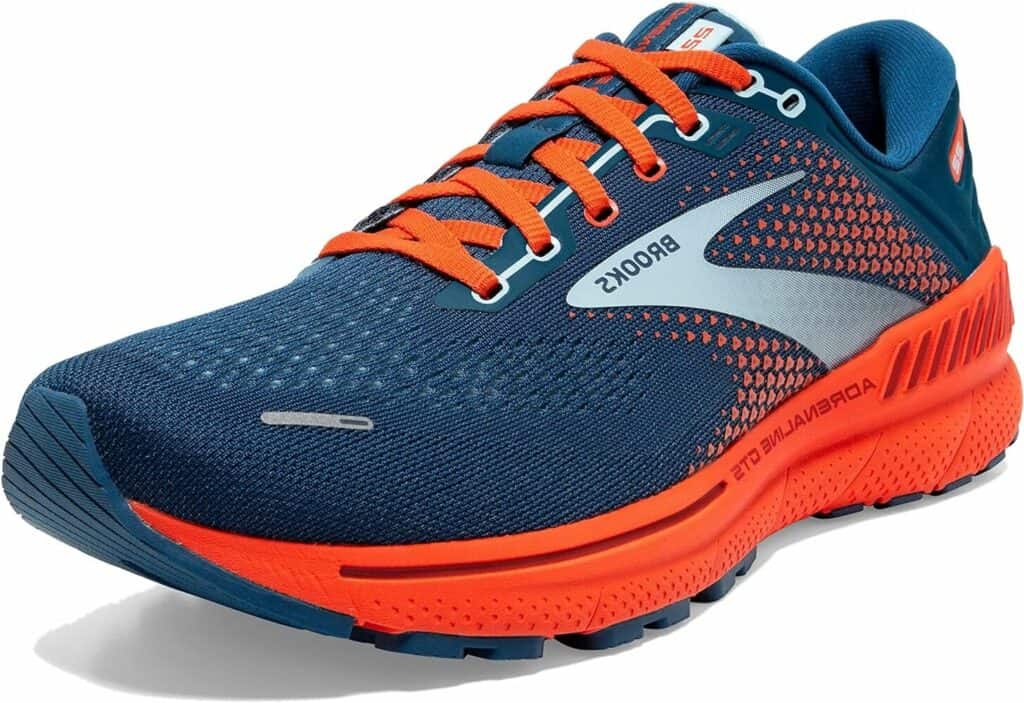
Best stability running shoe
Brooks GTS 22 Road Running Shoes
The Brooks Men’s Adrenaline GTS 22 Supportive Running Shoe is a game-changer for road runners. With Visit the Brooks Store as its trusted brand, this shoe provides unparalleled support and comfort. The Adrenaline GTS 22 is designed to cater to the specific needs of runners, offering a perfect blend of cushioning and stability. Its innovative technology ensures a smooth and responsive ride, allowing runners to push their limits and achieve their goals. Whether you are a seasoned runner or just starting out, this shoe is a fantastic choice for anyone looking for optimal performance and foot support.
Improved cushioning
Soft, pillowy cushioning
Soft and smooth ride
New upper is more comfortable than ever
Soft, comfortable cushioning
Heavy
Still heavy
Item type: Sneakers
Brand: Brooks
Model: Adrenaline GTS 22
Category: Supportive Running Shoe
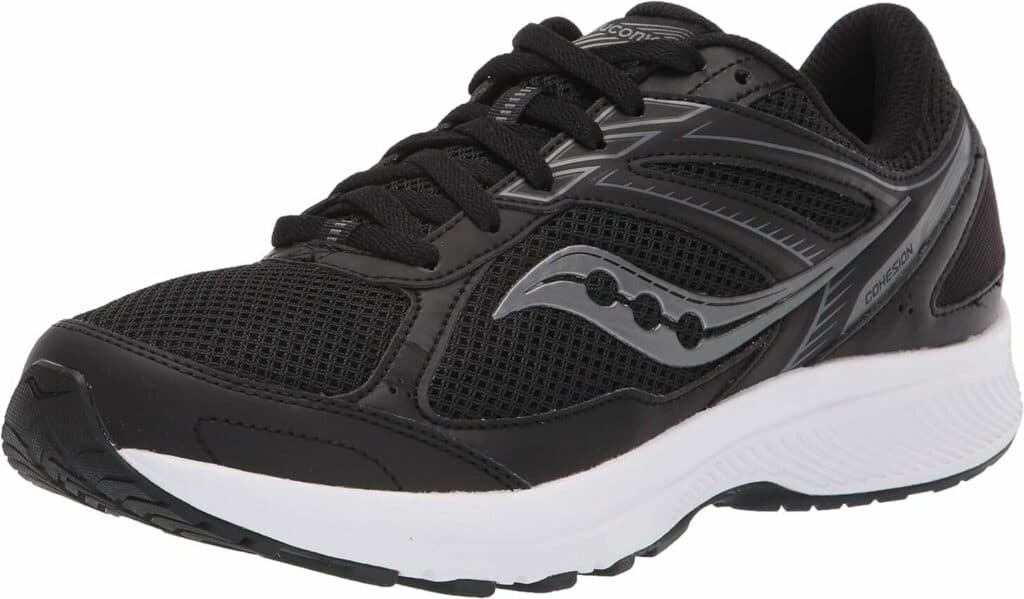
Best Trail Running Shoes for Beginners
Saucony Cohesion Tr14
The Saucony Men’s Cohesion Tr14 Trail Running Shoe is a remarkable addition to every trail runner’s arsenal. With its durable construction, it provides excellent traction and stability, allowing users to confidently conquer rugged terrains. The shoe’s cushioning system ensures a comfortable and supportive ride, reducing fatigue even during long-distance runs. The breathable mesh upper keeps feet cool, while the lace-up closure guarantees a secure fit. Overall, this trail running shoe from Saucony delivers in terms of performance, durability, and comfort, making it a top choice for trail enthusiasts.
Reliable traction
Very affordable
Generously cushioned for the price, suitable for long runs
Versatile, all-purpose tread design
Comfortable fit
Mediocre on pavement
May run too hot in warmer weather
Brand: Visit the Saucony Store
Gender: Men
Model: Cohesion Tr14
Category: Trail Running
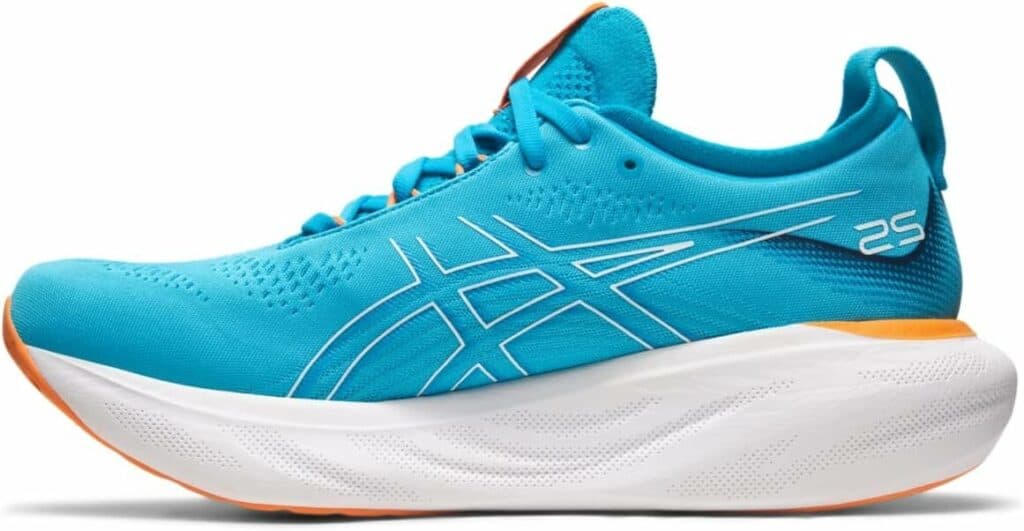
Best premium cushioned running shoe
ASICS Gel-Nimbus 25 Running Shoes for Men
The ASICS Men’s Gel-Nimbus 25 Running shoe is a top-notch choice for avid road runners. This product boasts excellent cushioning and support, ensuring a comfortable and safe running experience. The Gel-Nimbus 25 features ASICS’ signature gel technology, which provides optimal shock absorption and minimizes the risk of injury. The shoe’s breathable upper and flexible design allow for natural foot movement and enhanced breathability, ensuring that your feet stay cool and dry throughout your run. With its superior traction and durability, the ASICS Men’s Gel-Nimbus 25 Running shoe proves to be a reliable and high-performance footwear option for road runners of all levels.
Very comfortable with soft cushioning
Exceptional cushioning
Many different colors to choose from, including a “Retro Tokyo” 2020 Olympics edition
Improved, softer Gel cushioning
More flexible forefoot than previous version
Heel clutch could be stronger
Heavy
Gel Cushioning: Both rearfoot and forefoot
Weight: Light
Category: Men’s
Usage: Running, athletic
Model: Nimbus 25
What type of cushioning is best for high arches?
When it comes to finding the right cushioning for high arches, there are a few key factors to consider. High arches can cause imbalances and strain on the feet, which can lead to discomfort and even injury if not properly supported. Therefore, it is crucial to find the right type of cushioning to alleviate pressure and provide the necessary support.
One of the most effective cushioning options for high arches is orthotic inserts. These customized insoles are designed to provide extra support and stability for the arches, ensuring that they are properly supported during every step. Orthotic inserts can help distribute weight more evenly, reducing the strain on the arches and providing a comfortable cushioning effect.
Additionally, shoes with ample cushioning in the midsole area can also be beneficial for high arches. Look for shoes that incorporate technologies like gel cushioning or air pockets, as these can help absorb shock and provide extra cushioning where it is needed most. Memory foam insoles can also be a good option, as they conform to the contours of your foot, offering personalized cushioning and support.
Lastly, consider the flexibility of the shoe. Shoes with a flexible midsole can help accommodate the natural movement of the foot, allowing for a more comfortable walking or running experience. This flexibility can help prevent excess strain on the arches, making it easier to maintain proper posture and reduce the risk of injury.
In conclusion, finding the right cushioning for high arches is crucial for optimal comfort and support. Orthotic inserts, shoes with ample midsole cushioning, and flexible footwear are all excellent options to consider. Remember to try on different styles and brands to find the cushioning that works best for you and your unique foot structure. Don’t hesitate to consult with a podiatrist or footwear specialist for personalized recommendations.
What should you not do when buying shoes for high arches?
When it comes to buying shoes for high arches, there are a few things you should definitely avoid doing. First and foremost, do not settle for a pair of shoes that lack proper arch support. High arches require shoes that provide extra cushioning and support in the midfoot area. Neglecting this aspect can lead to discomfort, pain, and even long-term foot problems. Make sure to choose shoes specifically designed for high arches or look for removable insoles that can be replaced with orthotic inserts.
In addition, it is important to avoid rigid and inflexible shoes. High arches tend to cause a supinated or underpronated foot position, where the weight is distributed more on the outer edges of the feet. This can hinder natural foot movement and impact overall balance. Opt for shoes with a flexible sole that allows for proper foot articulation and promotes a more natural gait cycle.
Furthermore, avoid shoes that are too tight or narrow. High arches often come with a higher instep, which means your feet may require more room in the upper part of the shoe. Tight shoes can cause discomfort and restrict proper blood flow, potentially leading to blisters, calluses, or other foot ailments. Always prioritize finding shoes that offer enough width and depth to accommodate your high-arched feet comfortably.
In conclusion, when buying shoes for high arches, it is crucial to consider the need for proper arch support, flexibility, and comfort. Don’t settle for shoes that lack these important features, as doing so could result in foot pain and complications. Take the time to find the right pair that not only supports your arches but also allows your feet to move naturally. Your feet will thank you for it.
For more information about running with high arches check out this article HERE.

